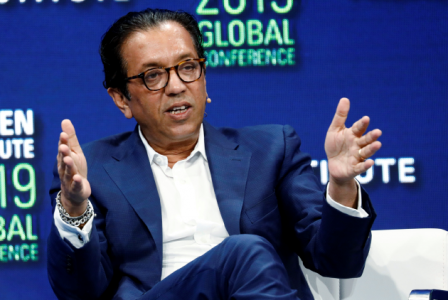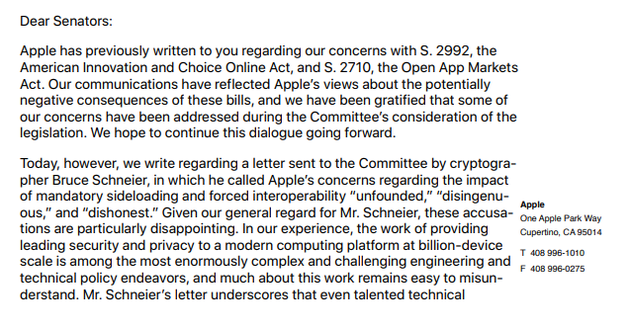your current location is:Home > Finance > depthHomedepth
Death shrouds the currency circle
In the cold winter of the cryptocurrency industry, death comes uninvited.
On November 28, local time, the Russian Embassy in Paris confirmed the death of Vyacheslav Taran. The 53-year-old billionaire is one of the three major foreign exchange dealers in Russia. He founded the "Forex Club (Forex Club)" and the trading platform Libertex. There are more than 2.5 million users.
Taran took a helicopter from Switzerland to Monaco on November 25, but the plane crashed on the way, and the two people on board - Taran and the pilot - died in Villefranche-sur-Mer near Monaco.
In just one month, three tycoons in the currency circle have died unexpectedly: On October 28, Nikolai Mushegia, the co-founder of the US cryptocurrency lending platform MakerDAO, drowned at the age of 29; On November 23, Tiantian Kullander, co-founder of the digital asset trading platform Amber Group, died in his sleep at the age of 30.
 Vyacheslav Taran, Tiantian Kullander and Nikolai Mushejian
Vyacheslav Taran, Tiantian Kullander and Nikolai MushejianThis cold winter in the cryptocurrency industry began at the end of 2021. The representative Bitcoin rushed to an all-time high of US$67,000 at that time, and then began to plummet, falling below US$20,000 by the end of June this year.
The second half of the year was even more turbulent. In November, the world’s second largest cryptocurrency exchange, FTX, went bankrupt and caused market shocks. It also aroused the close attention of regulators in many countries and regions. A wave of strict regulations targeting the industry may no longer be possible. avoid.
The accidental deaths of well-known figures in the industry in a short period of time have aroused suspicion and conspiracy theories from the outside world. The rift between regulators and the industry during the winter of cryptocurrency has also provided soil for the breeding of such conspiracy theories.
01
The three deaths are still under investigation, and the relevant departments have released very little information, and the outside world is still capturing "unusual things" from them.
According to multiple media reports, the pilot who died with Talan was experienced and the weather was fine that day. In addition, French media reported that there was another passenger on Taran's helicopter trip, but he or she canceled the trip at the last minute and did not board the plane.
 Helicopter crash scene Source: Grégory Leclerc/Nice Matin
Helicopter crash scene Source: Grégory Leclerc/Nice MatinMoreover, Taran's death is one in a string of deaths of Russian billionaires this year. Since the beginning of this year, at least 10 top Russian tycoons and heads of several large companies have died unexpectedly. For example, two executives of the Russian energy company "Far East and Arctic Development Group", one drowned and the other suffered a stroke; two executives of the Russian Lukoil Company, one fell from the sixth floor of the hospital and the other died in the basement of the villa ; Russia's two major gas company oligarchs died at home with their wives and daughters.
According to the Russian media "Life", Taran's foreign exchange club was revoked its business license in Russia in 2018 due to "suspected extortion of investors".
Ukrainian news outlet Unian said Talan "may have links to Russian foreign intelligence agencies" and "launder money through cryptocurrencies," without citing any evidence.
Although there are constant speculations from the outside world, there is no "real hammer". The travel company currently in charge of Taran's flight said that no details will be released during the investigation stage. Afterwards, he only told the media that it cannot be ruled out that the accident was caused by a "third-party error".
An important factor that has aroused people's alarm about Talan's death is that just 2 days before the helicopter crash, another bigwig in the currency circle died unexpectedly: On November 23, Tiantian Kullander "died in his sleep" at the age of 30 . He is the co-founder of Amber Group, a global virtual asset service provider, and is also a board member of e-sports club Fnatic.
Amber Group is headquartered in Singapore. The company has been valued at nearly US$3 billion in recent months. Its official website shows that its business covers Athens, Geneva, Dubai, Hong Kong, London, Tokyo and other places. Tiantian himself was listed on Forbes 30 in 2019 Rich list under the age of 30. But like many companies in the industry, Amber Group is being hit hard by the winter, cutting about 10% of its workforce in September.
The news of Tiantian's death was known to the outside world through the statement issued by the company, but the statement only stated that he "died in his sleep", and did not mention the place of death or the specific cause.
Of the three crypto figures who have died within a month, the death of Nikolai Mushegia appears to be the most unusual.
On October 28th, Nicola tweeted that "CIA, Mossad & some pedophile operations are running some sort of sex trafficking bait & extortion ring on pineapple ligo & caribbean islands ", and said, "They will torture me to death." CIA is the Central Intelligence Agency of the United States, and Mossad is the Israeli Intelligence and Special Mission Agency. Together with the Russian Federal Security Service and the British MI6, they are also called "the world's four major intelligence agencies."

A few hours later, Nikolai died. The next day, a surfer found Nicola's body in the water on a Puerto Rico beach, with his clothes on and his wallet in his hand.
Nikolai grew up in Kansas, USA, with Russian immigrant parents. In 2017, he moved to Florida to focus on encryption technology and contributed to the development of several blockchain projects. Nikolai is best known as an early technical partner of MakerDAO. MakerDAO is an automated mortgage loan platform on Ethereum and a provider of the stable currency Dai. Nicholas himself obviously earns a lot of money. He once donated 1.4 million US dollars (about 11 million yuan) to his alma mater, Carnegie Mellon University.
The deceased's own tweets immediately attracted people's attention. This tweet can still be seen today. In the comment area, someone "Ait" Twitter's new boss Elon Musk said: "Please protect Good tweet, and be extra careful about the person who told you to delete it." Joe Rogan, a famous stand-up comedian, talked about the incident on his podcast, calling it "crazy."
The tweet before his death is not the first time that Nicola has made similar remarks. He has tweeted many times to imply that the CIA and others will be against him. It is worth noting that Nicola has a history of mental health problems, and his father even traveled to Puerto Rico to accompany him. Some people think that "being murdered" is nothing but Nicola's delusion.
"New York Post" reported that the police revealed that Nicola's death is still under investigation, but they do not believe it is murder. Block Pierce, a currency practitioner who met Nikolai, said that he was also confused about Nikolai’s death at first, but after talking with many relatives and friends of Nikolai at the funeral, he thought that It wasn't a murder and his parents thought he might have been accidentally caught in a wave while surfing.
In addition, the local news media reported that "a 29-year-old man (referring to Nikolai) was dragged by the current" when reporting on the Nikolai incident. The area is known for its dangerously strong currents, which have caused several fatalities.
02
The death incident in the currency circle has aroused people's attention and suspicion. In addition to the successive occurrence of accidental deaths and the "unusualness" of the case itself, there are also historical factors.
In recent years, five well-known figures in the currency circle have died unexpectedly. In addition to the above three people, the other two died in 2018, and the cryptocurrency market was also in a cold winter.
Among them, Matthew Mellon (Matthew Mellon) died in a drug rehabilitation center. He was a descendant of the Bank of New York Mellon and served as the chairman of the New York Republican Finance Committee during his lifetime. He left around 1 million bitcoins (worth $1 billion at the time), but the keys went with him and the family couldn't extract them.
The death of Gerald Cotten (Gerald Cotten) has allowed the conspiracy theories surrounding him to continue to this day. The key in the "cold wallet" was shared with anyone, and his death caused 110,000 platform users' 250 million US dollars (about 1.67 billion yuan) to be locked up and unable to withdraw cash.
Cotton passed away on December 9, 2018. His wife issued an announcement through the company account on January 15 of the following year, announcing that Cotton died in India due to "Crohn's disease", and said that due to "unable to access the data in the cold wallet Cryptocurrency Reserve,” the platform is filing for creditor protection.
By February 5, QCX ceased operations due to financial problems.
Before Cotton's death, QCX was already in crisis. At that time, the cryptocurrency market was in a cold winter, and the price of Bitcoin collapsed. Many investors wanted to withdraw their principal from QCX, but many were prevaricated by reasons such as "technical failure". In addition, QCX also lost 10 million Canadian dollars (approximately RMB 50 million) worth of cryptocurrencies due to "software failure". RMB 140 million), the source of funds, frozen its platform funds.

It was under these circumstances that Cotton and his new wife traveled to India, where they died.
Public outcry, prime of life, disease with low fatality rate (Crohn's disease has a fatality rate of about 3%), foreign death, ill-timed vacation, nearly $200 million locked up... all the pieces put together, a kind of Speculation has gradually occupied people's minds (especially those users whose money is locked in QCX): Cotton is not dead, this is a "fake death" conspiracy to run away with money.
With the digging by folk geeks, the media and relevant departments, people have found more and more doubts: even if the "cold wallet" key is obtained, it will not help, because the "cold wallet" is already empty; , the deceased’s name was misspelled, and Cotten’s English “Cotten” was mistakenly written as “Cottan”; someone posted a screenshot of Cotton’s Skype page, which showed that Cotten’s webcam had been turned on after his death... These exacerbated people’s suspicion.
At this point, things are no longer just "network conspiracy theories".
The Ontario Province of Canada (OSC) conducted a 10-month investigation into the case and issued an investigation report in May 2020. The report pointed out that QCX's business model is like a "Ponzi scheme". Of the hundreds of millions of dollars lost by QCX users, $115 million was due to fraudulent transactions "thanks" to Cotton, and another $28 million was due to Cotten's unauthorized use of client assets without informing users Trade on other trading platforms.
In March of this year, Netflix also launched a documentary called "Trust No One" to investigate this unsolved virtual currency case. In April, Cotton's widow Jennifer published a new book "Bitcoin Widow: Love, Betrayal, and the Missing Million", claiming that Cotton lied to thousands of investors and deceived herself, but she also insisted that Cotton was indeed dead : "I held his hand when he died. It was a horrible moment."
To this day, some people still firmly believe that Cotton is still alive.
03
The cryptocurrency market has experienced 5 cold winters in total, but this time it was particularly bleak.
From the perspective of Bitcoin, the first "bear market" occurred in 2011. In April of that year, the price of Bitcoin broke through $1 for the first time, and it rose to $32, but the decline followed, and it fell to $0.01 in a few days . It was not until 20 months later, in February 2013, that the price of Bitcoin recovered to $32.
In 2013, the price of Bitcoin broke through $1,000 for the first time, then fell sharply, and fell below $700 a month later. One of the most important factors is the regulation of policies in various countries. The decline lasted 37 months, with Bitcoin hitting a low of $170 in January 2015.
In December 2017, the price of Bitcoin broke through $20,000. But the good times didn’t last long. In January of the following year, the Japanese cryptocurrency exchange Coincheck was hacked, causing the NEM cryptocurrency to lose about $530 million. Its security issues kicked off the 2018 “encryption winter”.
Bitcoin prices plummeted below $3,200 in 2018, losing more than 60% of its value in a matter of months. This cold winter lasted 36 months, recovered to the $20,000 level in 2020, and reached a high of $64,000 in April 2021.
But history is always surprisingly similar. While the crypto market value exceeded $1 trillion in 2021, Bitcoin entered a "bear market" again, falling below $30,000 three months after reaching a high in April. Musk also announced in May that Tesla would no longer accept Bitcoin as a payment method, saying that "mining" is not environmentally friendly.
The decline did not last long, and it had already risen back to a high of $68,000 in November of that year. But then a more tragic wave of decline began. In June of this year, the price of Bitcoin fell below $20,000 for the first time since 2020, a drop of more than 70%, the largest drop in the history of cryptocurrency.
Today, the winter of the cryptocurrency market, which has been more than a year, has not seen spring for a long time. The bankruptcy of FTX, the world's second largest cryptocurrency trading platform in early November, not only brought continuous "aftershocks", but also severely damaged the trust of the outside world in the cryptocurrency industry.
After the collapse of FTX, many countries have expressed their attitude to strictly regulate cryptocurrencies, while Zhao Changpeng, the founder of Binance, the world's largest cryptocurrency trading platform, is working hard to rebuild confidence in the industry. He not only created a special plan, injected $1 billion, and claimed to help practitioners affected by the FTX incident, he also expressed his welcome attitude towards regulation: "It is better to regulate the industry than try to fight it. "

It is under such circumstances that the conspiracy theory of the accidental death of three figures in the currency circle has the soil to grow.
Externally, Changpeng Zhao tried to convey an optimistic message that the industry is expected to recover next year.
Not everyone thinks so. According to the US "Business Insider", Mark Mobius, known as the "Godfather of Emerging Market Investment", predicts that the price of Bitcoin will continue to fall, even falling below $10,000, and the market may face a major adjustment.
The Nobel Prize winner and famous economist Paul Krugman simply gave the cryptocurrency a "death prophecy". In a recent article published in The New York Times, Krugman said that the collapse of FTX may be the beginning of the end of the cryptocurrency industry, and the cryptocurrency will enter an "endless winter."
Previous:Retirement, assessment, layoffs: Can Twitter overcome the difficulties behind Musk's ultimatum?
Next:The market value of "the first stock in the metaverse" fell by 76%. Roblox's hot wind, is it cold?
related articles
Article Comments (0)
- This article has not received comments yet, hurry up and grab the first frame~












